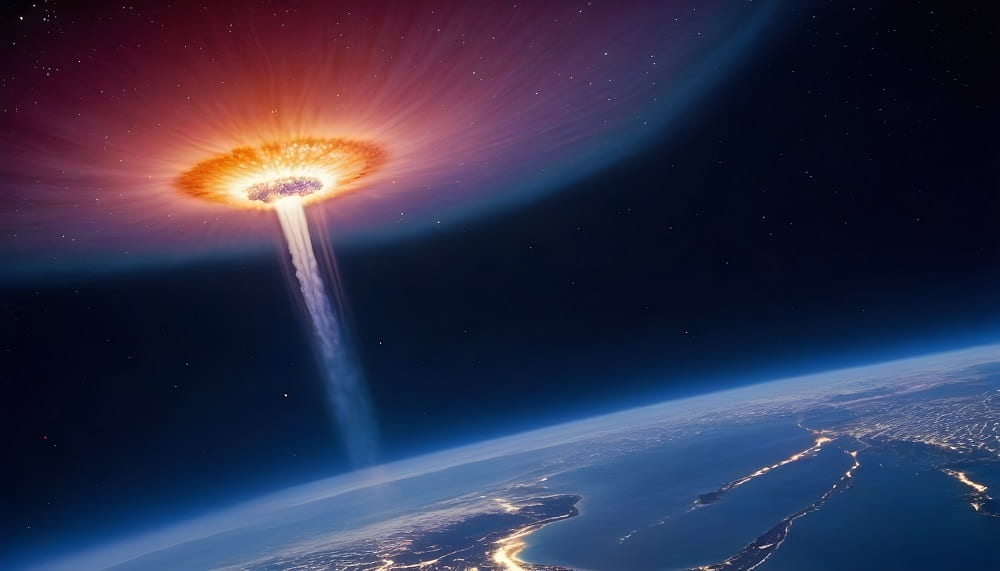Behold an account from the annals of the United States, an experiment teetering on the brink of cataclysm. The year 1962 bore witness to an audacious American endeavor—a nuclear bomb, christened "Starfish Prime," detonated in the celestial expanse. Launched from the Hawaiian expanse, this ominous creation surpassed the destructive power of the bomb dropped on Hiroshima by a staggering factor of 100. Its designated detonation point was in the sky, a lofty 400 km above Earth, a strategic choice endorsed by scientists to avert harm to our world.
As it erupted in the night sky, the bomb orchestrated an otherworldly transformation, turning the darkness into an ephemeral day that persisted for 15 minutes. However, this luminous display came at a significant cost. The explosion unleashed a colossal electromagnetic pulse, rendering Hawaii's radio stations silent. The streets plunged into darkness as streetlights flickered out, emergency alarms resounded, and a profound blackout enveloped the island.
The aftermath revealed a lasting consequence—a synthetic radiation belt encircling the globe for a decade. The stakes were dire; had the geomagnetic field succumbed, life on Earth would have teetered on the brink of extinction within a few short years.
The United States conducted a series of nuclear tests in space during the 1958-1962 period as part of a series known as Operation Fishbowl. The primary purpose of these tests was to study the effects of nuclear explosions in the Earth's magnetosphere and ionosphere, which are regions of the Earth's upper atmosphere affected by its magnetic field.
Specifically, the U.S. government was interested in understanding how high-altitude nuclear explosions could potentially interfere with or enhance long-range communication and radar systems. These tests were conducted during a time when there was significant interest in developing and improving military technology, including the use of nuclear weapons.
One notable event during Operation Fishbowl was the "Starfish Prime" test. "Starfish Prime" was the codename for a high-altitude nuclear test conducted by the United States on July 9, 1962. The test took place over the Pacific Ocean, approximately 900 miles southwest of Hawaii. This test involved a high-altitude detonation of a 1.4-megaton nuclear weapon. While the primary goal was scientific, it also had the unintended consequence of creating an artificial radiation belt in space and causing damage to several satellites in orbit.
The specific device detonated during Starfish Prime was a W49 thermonuclear warhead, which was carried into space by a Thor rocket. The warhead had a yield of about 1.4 megatons, making it one of the most powerful nuclear explosions ever conducted by the United States.
The detonation occurred at an altitude of approximately 250 miles (400 kilometers). The high altitude was chosen to maximize the effects of the explosion on the Earth's magnetic field and ionosphere. The test had significant and unexpected consequences, leading to both scientific discoveries and unforeseen challenges.
Read:-Project A119 - A top-secret plan by the US to detonate a nuclear bomb on the Moon
Here are some key aspects of the Starfish Prime test:
Auroral Effects: The detonation of Starfish Prime resulted in a spectacular light show in the night sky, creating artificial auroras visible from Hawaii, hundreds of miles away from the blast site. The electromagnetic pulse (EMP) generated by the explosion caused charged particles in the Earth's atmosphere to emit light, creating colorful and mesmerizing displays.
EMP Phenomenon: Starfish Prime played a crucial role in highlighting the potential impact of EMPs (electromagnetic pulse), a side effect of high-altitude nuclear explosions. The detonation released a massive burst of electromagnetic energy that damaged and disrupted electrical systems on satellites in low Earth orbit. This unintended consequence raised awareness about the vulnerability of electronic systems to EMPs.
Satellite Damage: Several satellites in low Earth orbit were affected by the radiation from the explosion. The increased radiation led to malfunctions and, in some cases, the failure of these satellites. This unexpected outcome underscored the need for a better understanding of the space environment and its potential impact on satellite technology.
Scientific Insights: Despite the challenges and surprises, the data collected from Starfish Prime contributed valuable insights into the behavior of nuclear explosions in space and their effects on the Earth's magnetosphere. Scientists gained a better understanding of the complex interactions between nuclear detonations and the space environment.
The untold story of Starfish Prime is a blend of scientific curiosity, Cold War geopolitics, and unforeseen consequences. While the test provided valuable scientific data, it also raised awareness about the potential risks and challenges associated with high-altitude nuclear explosions in space.
However, engaging in nuclear tests within the confines of space is an action deemed neither acceptable nor legal under prevailing international agreements, such as the Comprehensive Nuclear-Test-Ban Treaty (CTBT).














0 comments:
Post a Comment